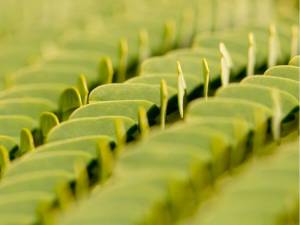
Controlling erosion and establishing healthier vegetation are crucial for preserving landscapes in urban, agricultural, and natural areas. These practices help prevent soil loss, effectively protect ecosystems, stabilise soil, enhance water retention, and support biodiversity.
Core Differences
Hydromulching and hydroseeding are alternative seeding methods for growing plants and preventing erosion. These environmentally friendly seeding methods play a key role in managing landscapes, providing benefits that help improve and protect natural areas.
Definition
Hydroseeding is a great way to establish large areas of vegetation, especially where traditional seeding methods don’t work. It involves spraying a mix of grass seed, water, mulch, and a bonding agent onto the soil. Hydromulching involves an even and constant mixing of water, seed, mulch, fertilisers, and sometimes organic mulch fibres to protect soil and encourage plant growth. It helps retain moisture, reduces erosion, insulates seeds, and boosts nutrient availability.
Materials Used
Hydroseeding involves choosing a suitable mix of grass seeds for the environment to ensure successful growth. Native grasses are often chosen because they adapt well and offer ecological benefits. Hydromulching is a technique that blends materials such as wood fibre mulch, seeds, tackifiers, and fertilisers to protect and promote seed growth. The mulch keeps the soil moist and insulated, while tackifiers help it stick to the ground, preventing erosion.
Applications
Hydroseeding is a flexible method for managing land. It’s used to create residential lawns, erosion control on roadsides, and cover large areas like parks and golf courses. This technique spreads grass seed evenly, speeds up germination, and offers ecological benefit. Hydromulching is crucial for controlling erosion and establishing vegetation. It forms a protective layer on slopes, cuts down on run-off, and stabilised soil, essential for maintaining landscapes.
Which method should you choose?
To effectively and sustainably establish vegetation, it’s crucial to adapt the method to the specific situation.
Large-Scale Projects
For large projects like construction or mine sites, hydroseeding is recommended because it covers large areas quickly and efficiently. Using native seed mixes is important to boost biodiversity and create habitats for local wildlife. Adding erosion control blankets during hydroseeding can improve soil stability, especially in areas prone to washout.
Small Residential Areas
In smaller residential areas, hydromulching can be a great option for homeowners. This method combines seed, mulch, and nutrients in one application, promoting quick germination and working well in different soil conditions. It’s especially useful for areas that are hard to traditional planting processes such as drill seeding.
Extreme Erosion-Prone Environments
In areas prone to erosion, like steep slopes or burned regions, using multiple strategies can be effective. Hydroseeding with deep-rooted native plants helps secure the ground surface soil and build resilience. Adding mulch blankets or retaining walls offers immediate support during the crucial early phase, reducing washout and encouraging better plant growth. Including growth stimulants in the mix can enhance seed viability in tough conditions, promoting quicker recovery and regeneration of the landscape.
Get Hydromulching from Asia Warehouse

Navigating the complexities that support faster vegetation growth can be challenging, especially when a unique project needs to require tailored solutions. We recommend consulting with professionals in hydroseeding and hydromulching. At Asia Warehouse, we know that effective landscape management starts with the right tools and materials. As Malaysia’s leading hydromulching supplier, we provide quality and expertise to meet your healthy vegetation growth.
